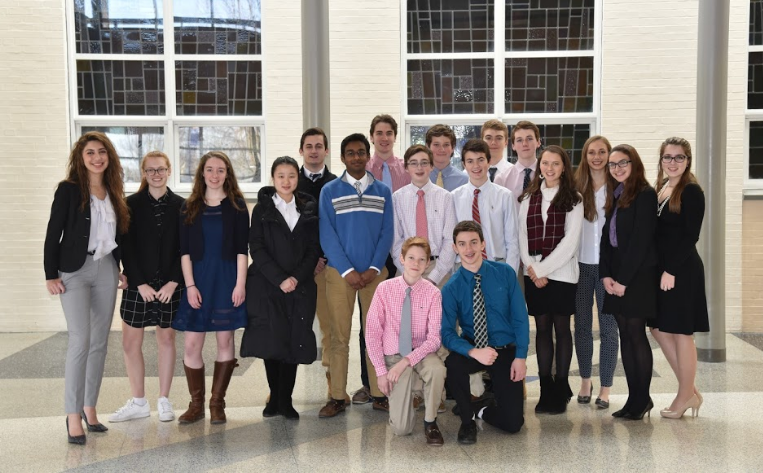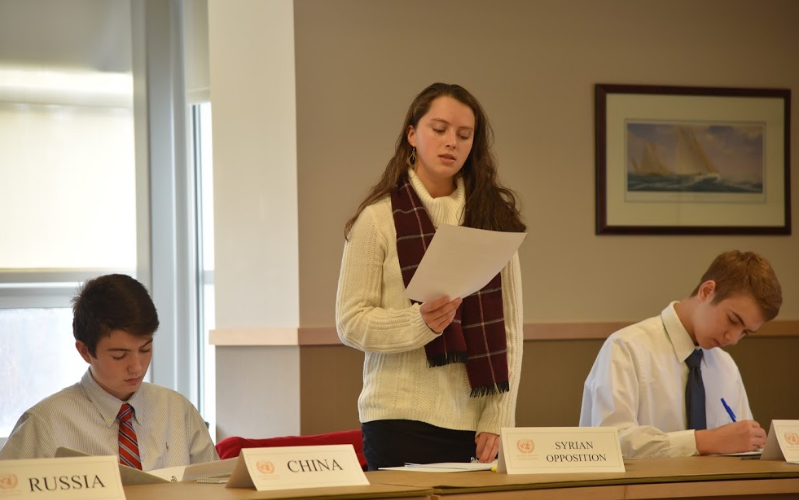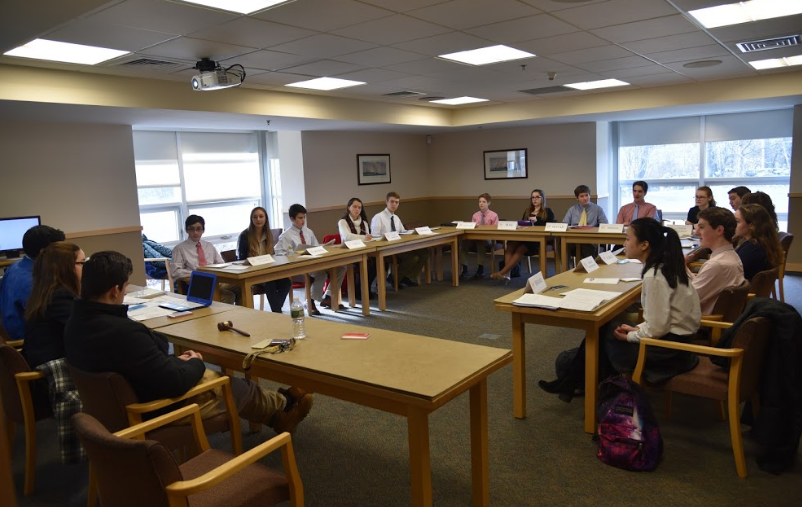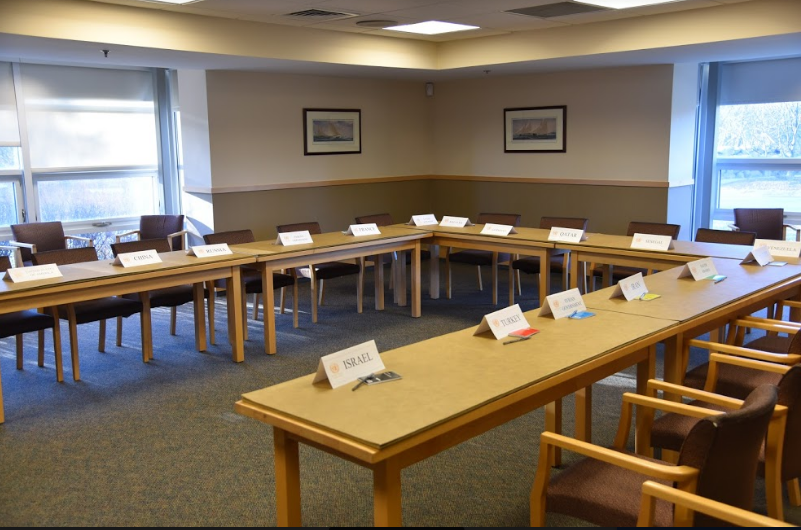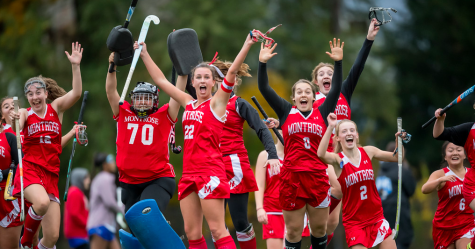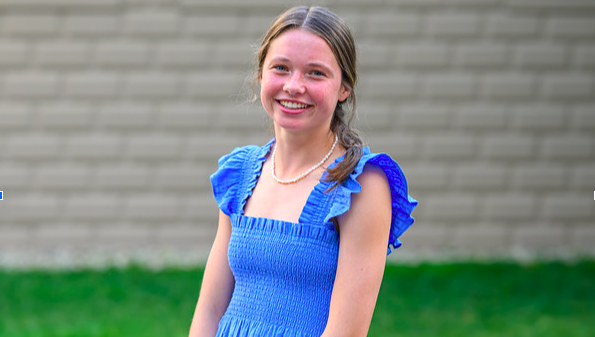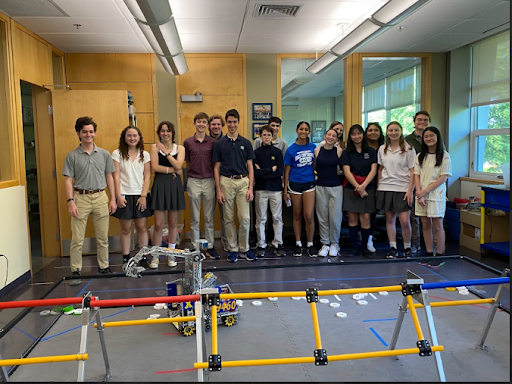Montrosians Make History: First Model United Nations Conference, Hosted With Xaverian Brothers High School
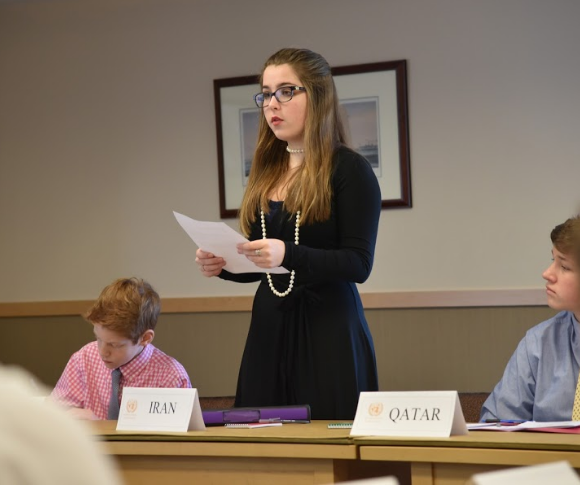
Nora Clancy ’18 represents Iran at X-M MUN I.
Saturday, January 14th marked a new chapter in Montrose history: our first time co-hosting a Model UN conference!
In early December, I worked with Harry Shanmugam ‘17 and Joe Rombalski ‘17, the co-chairs of the Xaverian Model UN club, to organize a mini-conference between our two clubs. We chose the Security Council committee with the topic of the Syrian Civil War, a complex and ongoing issue. Until January 14th, we assembled materials, created placards and programs, and prepared for the 15 Montrose and Xaverian delegates who would be coming to Xaverian on Saturday morning.
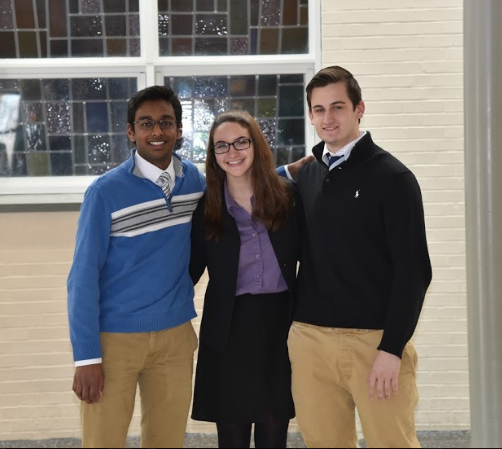
The 7 Montrose girls who attended were: Abby Navin ‘19 (United Kingdom), Caroline Churney ‘19 (Turkey), Missalle Jreij ‘18 (Lebanon), Francesca Dyke ‘18 (Syrian Opposition), Ciara Young ‘18 (Russia), Nora Clancy ‘18 (Iran), and Sylvia Wen ‘18 (Israel).
Sylvia said: “This was my first conference, and I think it was really exciting. The debate was amazing. People gave some strong opinions about their countries during the conference. They were thinking so fast that sometimes I couldn’t follow them. But it was still very interesting.”
The day was packed with exciting debate from the first moderated caucus (formal debate in which each speaker has between 30 and 45 seconds to speak). Delegates discussed the violence going on in Syria, humanitarian concerns, the refugee crisis, and the best ways to resolve the conflict. Towards the end of the first session, the delegates seemed divided into two blocs (groups of delegates), with divisions over how to deal with Syrian President Assad.
In the midst of these disagreements, Harry, Joe, and I decided to introduce an unexpected surprise: a crisis simulation. Crises generally take the forms of “breaking news” or some unexpected event in order to get the delegates thinking on their feet and work with other delegates to resolve the crisis through directives (“mini-resolutions” to problems that arise).
Abby Navin ‘19 added: “The crisis to me was super fascinating and something I don’t usually think too much about. I found the conference and research very eye-opening. I didn’t realize the actions of Assad until now and would like to definitely do everything I can for these suffering people!”
After lunch, second session began. The delegates continued to debate the best solutions to the war, as well as to collide over President Assad. To help clear up some of the discrepancies, we had Harry “visit” us as President Assad for a 10-minute question-and-answer.
Francesca Dyke ‘18 said: “The crisis turned out to be much more complicated than I thought. The delegates from the other countries showed that there are more than one side to every story and that are never just the bad guys vs. the good guys. An interesting part of the conference was when Harry portrayed the Syrian president, Bashar al- Assad. “Assad” addressed the issue of innocent victims in the civil war, and claimed to take no responsibility. His participation opened up discussion among all the participating nations for how to improve the lives of the Syrian people.”
After more moderated caucus debate, delegates returned to “unmod,” and two working papers (draft resolutions) were presented at last. Working Paper 1.1 and Working Paper 2.1 were similar in several ways, but 2.2 included both the Syrian Opposition delegate, Francesca Dyke ‘18, and the Syrian Government delegate, Gage Higgins XBHS ‘18, as sponsors (writers of the resolution). The other chairs and I were pleased to see that the delegates had reached a compromise.
We then moved into voting procedure on the two working papers. Because our committee was the Security Council, the five permanent members—France, China, Russia (Ciara Young ‘18), the United States, and the United Kingdom (Abby Navin ‘19)—had veto power: if any two of them vetoed any bill, directive, or working paper, that effort would be “killed.” Working Paper 1.1 was vetoed, so we moved on to 2.1. To my surprise, 2.1 was vetoed by two of the permanent members. Both working papers were killed.
My co-chairs and I quickly discussed what to do, and decided to suggest that the five permanent members meet during an unmoderated caucus (a “suspension of rules” in which delegates can get up and move around to talk to other delegates). After about 10 minutes, the superpowers returned with two new clauses added to 2.1 and an agreement finally reached. We moved into voting procedure, and Working Paper 2.1 emerged as the resolution.
For many Montrosians, the X-M MUN was their first conference, and it was organized specifically with beginners in mind. Nora Clancy ‘18 said, “I had a blast! It was an awesome experience that made me fall in love with the whole model UN club” Francesca added: “This being my first MUN conference, I didn’t know quite what to expect. However, as the day progressed, I became much more comfortable speaking up for my country. By the end of the conference, I felt confident and able to truly contribute to the debates.”
I was so impressed by the research, speaking, diplomacy, of all the delegates who attended. The Montrose delegates worked especially well during unmod, where the real bulk of negotiating and resolution-making occurs. They worked well with both other Montrosians and the Xaverian delegates, and proved remarkable speakers, able to convey their countries’ positions clearly and thoughtfully.
Our X-M MUN Conference was the first of what’s sure to be many joint conferences between Xaverian and Montrose, and we look forward to our next!

